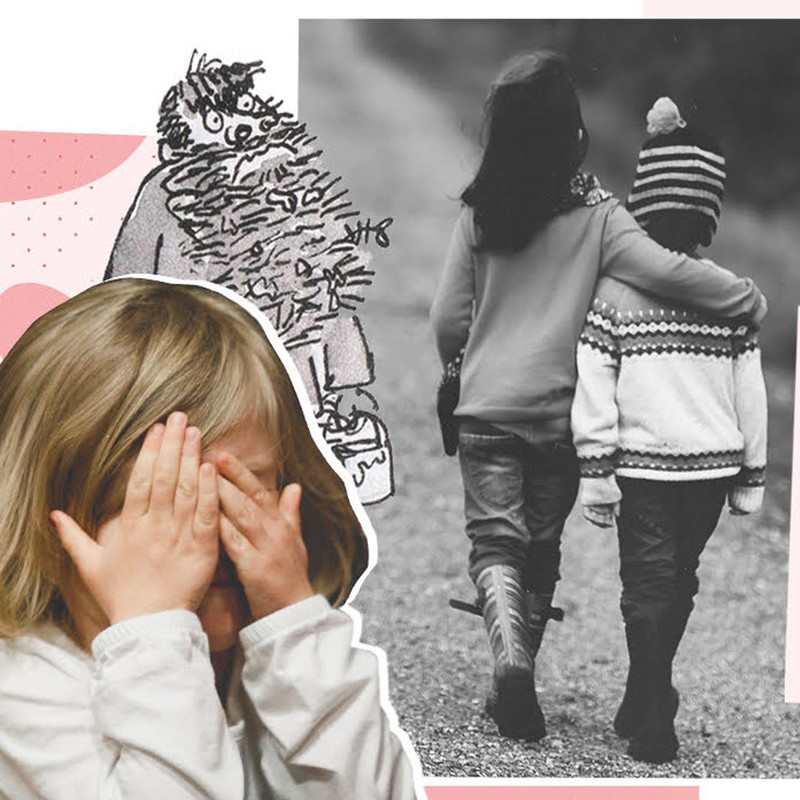A Is For Anxiety
We will all experience anxiety or worry at some time in our lives. For children and young people there is a plethora of things in our current world to worry about. The recent Green Paper, outlining how to help young people with their mental health, explains that one in ten young people has some form of diagnosable mental health condition, and that the most commonly presenting difficulty is anxiety. The concern is that this is on the rise. This statistic does not include the broader picture encompassing more commonly felt worries and concerns held by our youth of today.
The accessibility of global news and information is a great thing, broadening the minds of our children, allowing them to appreciate different lives and experiences. It does, however, also serve the function of disseminating some truly horrific realities. It is relatively common for children today to have an appreciation of terrorist attacks, tsunamis, knife crime, sexual assaults, mass shootings …..the list goes on. I’m always staggered by how often I find myself leaping on the mute button when the news headlines blast into the car, with my two children who are , six and eight- year olds listening intently. I swear my six- year old feels worried about Trump. Specifics clearly escape him, and compare closely to the irritation he feels during his current favoured Roald Dahl Top Trumps game and is dealt the worst card of Mr Twit (clearly an accurate depiction) – but he understands it’s a worrying state of affairs. Then we move onto consider the impact of social media, again, a brilliant way for everyone to stay connected, particularly for those less skilled in verbal interaction and communication, but it’s capacity to instigate worry, self-doubt and a create platform for bullying is mind-blowing. Finally lest we forgot the impact on our children of navigating the minefields of friendships, exams, appearance, relationships and sexuality, feeling different, parental separation, money…..Let’s be honest, it’s a tough journey during which it can feel they hold little power and autonomy.
How can parents help? The first thing to remember and convey is that anxiety is a normal part of growing up. Anxiety is an evolutionary response that is extremely common. Although it feels unpleasant, it is harmless. Feeling anxious or scared has ensured our survival, helping us know when to run from that sabre toothed tiger or fight the caveman next door. Why do you need the toilet when you feel anxious? To literally lighten our load, enabling us to move quickly from danger. It continues to keep us safe today. When we feel symptoms of anxiety standing near a high precipice, it helps us move away and protect ourselves from falling. Anxiety becomes more of a problem when we feel it in the absence of danger and when it begins to interfere with our lives.
As parents, an important part of our job is to talk to our children and provide reassurance. We want to make our children feel safe and we want to take away their distress. It can be helpful to create opportunities to talk to your child about their concerns and try to uncover why and what they are worried about. Often the best of these conversations happen during everyday activities, the drive to ballet, the walk home from school and, in my experience, there’s never seems to be a better time for (delay tactic) conversation than when my children have been told to go to sleep.
As temping as it is to reassure, this can become addictive for the child who needs more and more reassurance to feel better. At other times, no matter how much reassurance we give, empty words fall on deaf ears and is not enough to beat the fear or worry felt. As an alternative we can seek to validate our children’s distress by explaining that we recognise how and what they are feeling and how difficult it may be. This encourages children to learn to recognise their emotional state and starts to put names to feelings.
We then want to think about helping to empower our children so they begin to develop the ability to find solutions to their problems. We don’t want to create a total dependency on others to feel better. Ask them questions that enable them to find their own answers to the dilemma in question. If the fear is that “no one will talk to me at school tomorrow” then ask “what could you do?” “where could you go?” “who else could you talk to?” “what is the worst that could happen and can you think of a way to manage this?” “will you survive feeling uncomfortable?”
Encourage positive statements. “I can do this”. “I am safe”. “This will pass”.
The tendency to want to avoid the thing that makes you anxious is understandable and a natural response. It even helps us feel better in the short term because we do not have to face the thing that we fear. The snag here is that it makes us feel worse in the longer term, feeding the anxiety and limiting the opportunity to find out you were perhaps worrying unnecessarily or had the skills all along to deal with the situation.
Parents can play a role in encouraging children to face their fears. Both realising things are often not as bad as we anticipate them to be and/or surviving a difficult experience are vital learning experiences which help to foster confidence and coping skills. The key is staying in the unpleasant experience without giving in to the temptation to run away. To prove the point, I liken it to locking a spider phobic in a room with 500 spiders (we’re talking hypothetical here!). While the person may initially feel an extremely high level of anxiety for some time, if left long enough those symptoms would abate. We’re just not physiologically built to sustain feelings of fear for a long period of time. If you stay in an anxiety provoking situation for long enough you will experience your anxiety reducing over time. You will have beaten the fear!
No one is suggesting that you throw your child towards their greatest fear. Start small. Start with guaranteed success and build up slowly. Consider a low- level worry and think with your child about the benefits of facing up to this fear and “experimenting” to discover if their worry is based in reality or if they are pre-empting the worst-case scenario and/or underestimating their ability to cope.
Finally remember that our children learn from us. They learn about self-care, the ability to be kind to, and take care of, ourselves. They learn what to be frightened of and how to manage fears. Don’t be afraid to show your children you feel anxious, but make sure you also allow them to see how you face and overcome your fears.
DISCLAIMER: We endeavour to always credit the correct original source of every image we use. If you think a credit may be incorrect, please contact us at info@sheerluxe.com.






